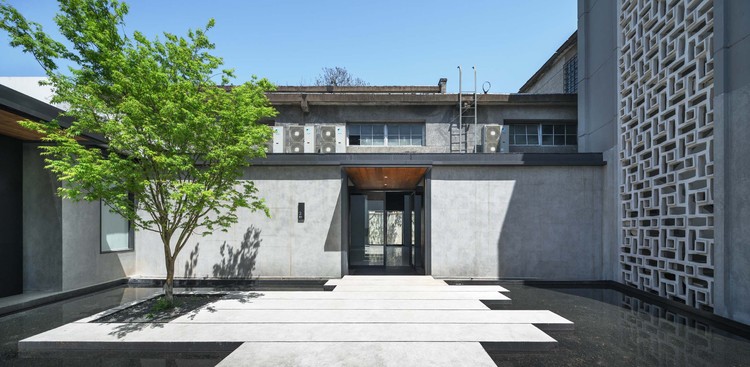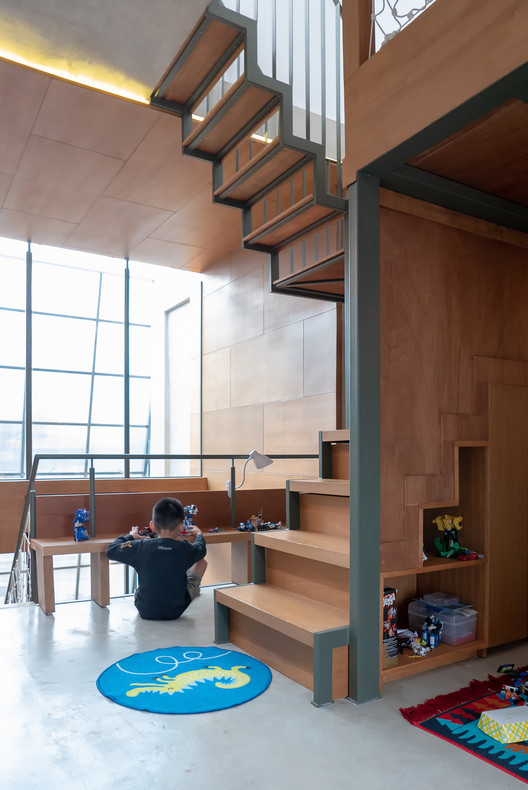Crematory in Basel Architekturbüro Garrigues Maurer
2018-02-09 03:00
© Rasmus Norlander, Ariel Huber
c Rasmus Norlander,Ariel Hube


架构师提供的文本描述。瑞士最大的墓地位于莱茵河附近,离巴塞尔市中心不远,与德国接壤。所谓的霍恩里,是一个哀悼和奉献的地方,同时也是一个敏感和精确的栽培花园。它放在边界上的意义不明确。同样,它也是一个多文化的地方,反映了我们死前和死后在一起。
Text description provided by the architects. Located not far from the centre of Basel, directly at the border to Germany, close to the Rhine lies Switzerland’s biggest cemetery. The so-called Hörnli is a place of mourning and devotion, which at the same time is a sensitive and precisely cultivated garden. It is placed on the border in an ambiguous sense. Likewise, it is a multicultural place that reflects our being together before and after death.
Ground Floor Plan


这座墓地于30年代完工,其现有的布局和建筑都是由自然嵌入的直直的古典几何顺序塑造的。这种城市布局以理性和清晰的形式给人以慰藉。新的火葬场,完成于2017年年中,从属于这些发现的模式。它既是风景的背景,也是告别的行为。它创造了一种庄重的体验,具有普世性,而且很容易为所有人所接受。
The cemetery was finished in the 30s and its existing layout and buildings are shaped by a straight classical geometrical order embedded in nature. This urban layout gives consolation in form of rationality and clarity. The new crematory, finished mid-2017 subordinates itself to these found patterns. It forms a background for both the landscape and the act of saying farewell. It creates a solemn experience, ecumenical and easily accessible to all.
© Rasmus Norlander, Ariel Huber
c Rasmus Norlander,Ariel Hube


在主胡同之后,该建筑物似乎是一个独立的体积,符合现有的太平间建筑。一个新的入口-法院形成了一个在现有的和新的结构之间的中介空间。从那里你进入一个封闭的庭院,提供一个亲密的,半公共的空间,只有各自的哀悼者允许一个缓慢的最后行动。这一系列的空间结束在火葬场后,在高度的体积发展。建筑物从入口的最低层逐步上升到它的最高部分-独立烟囱。这些运动通过创造一系列的空间来引导这些家庭,这些空间的结束和开始是建筑,一扇打开的大窗户向天空敞开。
Following the main alley, the building appears as an independent volume in line with the existing mortuary building. A new entrance-court forms a mediating space between the existing and new structures. From there you enter an enclosed courtyard providing an intimate, semi-public space only available to the respective mourners allowing a slow approach to the final act. This sequence of spaces ending in the cremation room is followed by a volumetric development in height. The building rises step by step from the lowest level of the entrance to its highest part, the free-standing chimney. These movements guide the families by creating a succession of spaces that ends and starts with the buildings one big open window opening towards the sky.
© Rasmus Norlander, Ariel Huber
c Rasmus Norlander,Ariel Hube


Longitudinal Section


© Rasmus Norlander, Ariel Huber
c Rasmus Norlander,Ariel Hube


此外,新火葬场的特点是图片的同时。焚烧的工业过程和哀悼的情感例外。翻译是一座有混凝土结构和砖皮的建筑物。混凝土是一种粗糙的工业产品,砖块是一种手工和手工铺设的材料.后者在建筑物周围延伸,对光线和空气开放,定义了一个同时开放和关闭的多孔边界。
Furthermore, the new crematory is characterized by the picture of simultaneity. The industrial process of incineration and the emotional exception of mourning. The translation is a building with a concrete structure and a brick skin. Concrete is a rough, industrial product, the brick is a hand-made and hand-laid material. The latter stretches around the building and opens to light and air, defining a porous border that is open and closed at the same time.
© Rasmus Norlander, Ariel Huber
c Rasmus Norlander,Ariel Hube


























































Architects Architekturbüro Garrigues Maurer
Location Hörnliallee 70, 4125 Riehen, Switzerland
Project Year 2017
Photographs Rasmus Norlander, Ariel Huber
Category Crematorium
Manufacturers Loading...
























